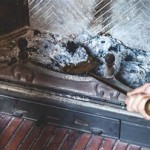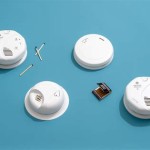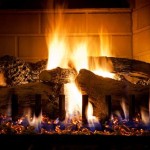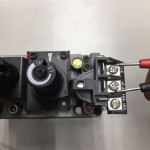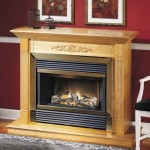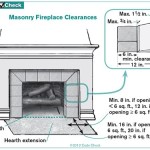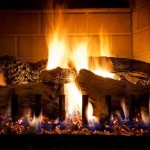Gas Fireplace Supplies: Ensuring Safety, Efficiency, and Aesthetics
Gas fireplaces offer a convenient and aesthetically pleasing alternative to traditional wood-burning fireplaces. Their ease of use, consistent heat output, and reduced maintenance requirements make them a popular choice for homeowners. However, maintaining a gas fireplace for optimal performance and safety necessitates understanding the diverse range of gas fireplace supplies available and their proper usage.
These supplies encompass various components, from essential safety devices to decorative elements, all contributing to the fireplace's overall function and appearance. Selecting the correct supplies and ensuring their proper installation and maintenance are paramount for safety, efficiency, and longevity of the gas fireplace.
Key Point 1: Essential Safety Components and Their Function
Safety is the foremost consideration when dealing with gas appliances. Several critical components are designed to prevent gas leaks, carbon monoxide poisoning, and other potential hazards. These safety features are integral to the safe operation of a gas fireplace and require regular inspection and maintenance.
Gas Valves: The gas valve controls the flow of natural gas or propane to the fireplace. It regulates the amount of fuel delivered to the burner, influencing the flame size and heat output. Gas valves are typically equipped with safety features like a thermocouple or thermopile, which monitors the pilot light flame. If the pilot light goes out, the thermocouple or thermopile signals the valve to shut off the gas supply, preventing the accumulation of unburned gas. Regular inspection of the gas valve is essential to ensure it is functioning correctly and free from leaks. A malfunctioning gas valve can lead to gas leaks or inconsistent flame performance, potentially causing a hazardous situation.
Pilot Assembly: The pilot assembly consists of the pilot light, thermocouple or thermopile, and the pilot burner. The pilot light provides the ignition source for the main burner. The thermocouple or thermopile generates a small electrical current when heated by the pilot light flame. This current is crucial for keeping the gas valve open. A faulty pilot assembly can result in difficulty igniting the fireplace, pilot light extinguishing, or the inability to keep the main burner lit. Regular cleaning and inspection of the pilot assembly are necessary to ensure reliable ignition and prevent gas shut-off.
Gas Lines and Fittings: The gas lines transport natural gas or propane from the gas supply to the fireplace. These lines and fittings must be properly sized and installed to ensure adequate gas flow and prevent leaks. Gas lines are typically made of black iron pipe or flexible gas connectors. All connections must be tightly sealed with gas-rated pipe dope or Teflon tape to prevent leaks. Regular inspection of the gas lines and fittings is crucial to detect any signs of corrosion, damage, or leaks. Gas leaks can pose a significant fire and explosion hazard. If a gas leak is suspected, the gas supply should be immediately shut off, and a qualified technician should be contacted for repair. Using a gas leak detector is recommended during inspections.
Carbon Monoxide Detectors: Carbon monoxide (CO) is a colorless, odorless, and deadly gas produced by the incomplete combustion of fuels such as natural gas or propane. Gas fireplaces, if not properly maintained or vented, can potentially release carbon monoxide into the home. Installing and maintaining carbon monoxide detectors is crucial for early detection of CO leaks. Detectors should be placed near sleeping areas and on each level of the home. Batteries should be replaced regularly, and detectors should be tested periodically to ensure they are functioning correctly. Carbon monoxide poisoning can cause flu-like symptoms, loss of consciousness, and even death. If a carbon monoxide leak is suspected, evacuate the home immediately and contact emergency services.
Key Point 2: Maintaining Efficiency with Replacement Parts and Accessories
Optimizing the efficiency of a gas fireplace not only saves on energy costs but also prolongs the lifespan of the appliance. Regular maintenance and the use of appropriate accessories can contribute significantly to energy efficiency and overall performance.
Burners: The burner is the component where the gas is ignited to produce the flames. Over time, burners can become corroded or clogged with debris, affecting their ability to burn gas efficiently. A dirty or damaged burner can result in uneven flame patterns, reduced heat output, and increased energy consumption. Regularly cleaning the burner with a brush or vacuum cleaner can help maintain its efficiency. If the burner is severely corroded or damaged, it should be replaced. Replacement burners are available for most gas fireplace models. Selecting the correct burner for the specific fireplace model is essential to ensure proper fit and performance.
Glass Doors: Glass doors serve several purposes in a gas fireplace. They enhance the aesthetic appeal of the fireplace, help to contain sparks and embers, and improve energy efficiency. Glass doors can help to reduce heat loss up the chimney when the fireplace is not in use. However, glass doors must be properly maintained to ensure optimal performance. The glass should be cleaned regularly with a fireplace glass cleaner to remove soot and grime. Damaged or cracked glass doors should be replaced promptly. Replacing the glass doors with energy-efficient models can further improve the fireplace's overall efficiency.
Remote Controls and Thermostats: Remote controls and thermostats offer convenient control over the fireplace's operation. Remote controls allow users to adjust the flame height, turn the fireplace on and off, and set timers from the comfort of their couch. Thermostats enable users to maintain a consistent room temperature by automatically adjusting the flame height based on the desired temperature setting. Using a thermostat can help to prevent overheating and conserve energy. Replacement remote controls and thermostats are available for most gas fireplace models. Ensure compatibility with the specific fireplace before purchasing replacements.
Fans and Blowers: Fans and blowers can significantly improve the circulation of heated air throughout the room. These devices help to distribute the heat more evenly, reducing hot spots and cold spots. Fans and blowers are typically installed at the bottom of the fireplace and blow the heated air into the room. The increased air circulation allows for quicker and more efficient heating of the space. Selecting a fan or blower that is appropriately sized for the fireplace and the room is important. Regular cleaning of the fan or blower is necessary to prevent dust accumulation and maintain optimal performance.
Key Point 3: Enhancing Aesthetics with Decorative Elements
While functionality and safety are paramount, the aesthetic appeal of a gas fireplace is also a significant consideration. Numerous decorative elements are available to customize the fireplace's appearance and complement the room's décor.
Fire Logs: Fire logs are ceramic or concrete reproductions of natural wood logs that are placed in the fireplace to create a realistic flame appearance. Fire logs are available in various sizes, shapes, and finishes to match different styles and preferences. High-quality fire logs can significantly enhance the visual appeal of the fireplace. Selecting fire logs that are specifically designed for gas fireplaces is essential. Using the wrong type of logs can interfere with gas flow and affect the fireplace's performance. Proper placement of the logs is also crucial to ensure a realistic flame pattern and efficient heat distribution.
Fire Glass: Fire glass is a popular alternative to fire logs. It consists of small, colorful pieces of tempered glass that are placed in the fireplace to create a sparkling and modern flame effect. Fire glass is available in a wide variety of colors and sizes, allowing for endless customization options. Fire glass is durable, heat-resistant, and does not produce soot or ash. Proper installation of fire glass is essential to ensure safe and efficient operation. The glass should be placed evenly over the burner, avoiding blockage of the gas ports. Combining different colors and sizes of fire glass can create unique and visually appealing flame effects.
Decorative Fronts and Surrounds: Decorative fronts and surrounds are used to enhance the fireplace's appearance and integrate it seamlessly into the room's décor. These elements can be made of various materials, including wood, stone, metal, and tile. Decorative fronts and surrounds are available in a wide range of styles, from traditional to contemporary. Selecting a front or surround that complements the room's design and matches the fireplace's dimensions is crucial. Proper installation of the front or surround is essential to ensure a secure and aesthetically pleasing fit.
Embers and Accent Lighting: Embers are small, glowing pieces of material that are placed around the base of the flames to create a more realistic and inviting ambiance. Ember material can be made of ceramic fibers or other heat-resistant materials. Accent lighting can be added to the fireplace to highlight the flames and create a warm and inviting atmosphere. LED lighting is a popular choice for accent lighting due to its energy efficiency and long lifespan. The placement and intensity of the accent lighting can significantly affect the overall ambiance of the fireplace.
In conclusion, selecting the appropriate gas fireplace supplies is crucial for ensuring the appliance's safety, efficiency, and aesthetic appeal. Regular inspection and maintenance of essential safety components, such as gas valves, pilot assemblies, and gas lines, are paramount for preventing gas leaks and carbon monoxide poisoning. Optimizing the fireplace's efficiency through the use of replacement parts and accessories, such as burners, glass doors, and fans, can save on energy costs and prolong the fireplace's lifespan. Finally, enhancing the fireplace's aesthetics with decorative elements, such as fire logs, fire glass, and decorative fronts, can create a warm and inviting atmosphere that complements the room's décor. Proper installation and maintenance of all gas fireplace supplies are essential for ensuring safe and enjoyable operation.

Gas Fireplace Accessories S Kozy Heat

Gas Propane Fireplace Accessories Venting Friendly Fires

Gas Fireplace Accessories

Top 6 Gas Fireplace Accessories The Fire Man Llc

Fireplace Gas Wood Electric Fireplaces

Fireplace Accessories Schwering S Hearth And Hardware

Fireplaces Aspen Hearth Home

Chim Cherie House Of Fireplaces Accessories

Buy Fireplace Accessories Deals
.aspx?strip=all)
Top 11 Gas Fireplace Insert Trends Of 2024
Related Posts

